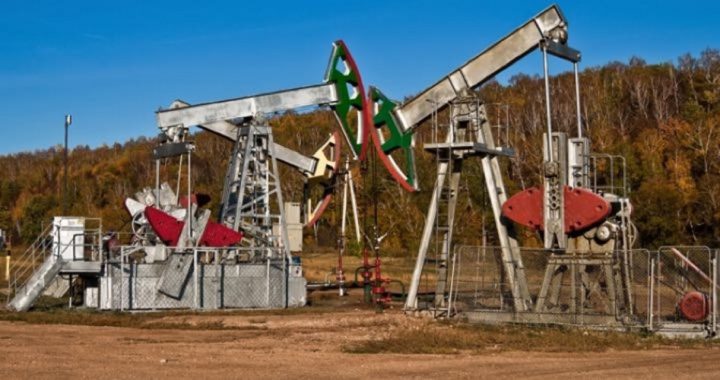
When the Paris-based International Energy Agency (IEA) reported Tuesday that OPEC’s remaining reserves “might be stretched to the limit” as it attempts to increase its production, the world oil market pushed prices to 3½-year highs. The IEA said that total OPEC crude oil production in June reached a four-month high of 31.87 mbd (million barrels per day), leaving precious little reserve capacity in the event of future worldwide disruptions.
In June OPEC agreed to add back about one million barrels of crude oil daily, but observers are persuaded that many of the cartel’s members won’t be able to meet its new quota, putting pressure on Saudi Arabia to pick up the difference.
A series of “worldwide disruptions” has driven crude oil prices from a low of $41 a barrel in January 2016 to $74 a barrel last Tuesday, an increase of 76 percent. Those disruptions include the implosion of production by Venezuela’s state-owned oil company PdVSA from over 3 mbd to less than half that currently; the drop in oil delivery from Libya from 1.3 mbd in February to just over 500,000 barrels a day, following recent oil port closures; the strike by hundreds of oil field workers in Norway following failed negotiations on a proposed wage hike; a power outage at Canada’s Syncrude oil sands facility taking another 350,000 barrels a day offline; and U.S. sanctions on Iran expected to take hold later this year that are estimated to cut in half Iran’s present oil exports of 2.5 mbd.
Taken all together then, forecasters were pessimistic that OPEC’s efforts to ramp up crude oil production to offset these losses would succeed, and crude oil prices rose in response.
As those prices continued to rise, they got the attention of the president. As Bob McNally, a former energy advisor to then-President George W. Bush, put it, “Few things terrify an American president like rising [gasoline] pump prices.” And so, in what can safely be said was a politically motivated move, word leaked out from “people familiar with the matter,” according to the Wall Street Journal, the United States was “considering” tapping into the country’s Strategic Petroleum Reserve in order to keep crude oil prices from moving even higher. That leak on Wednesday dropped crude oil prices by $5 a barrel, with the price for August delivery of crude dropping below $69 a barrel until rebounding slightly before the weekend.
Any release of the approximate 660 million barrels of crude stored in salt caverns in Texas and Louisiana near Gulf Coast refineries is said, by those same unnamed sources, to be “contingent on a further steep rise in oil prices from today’s levels — more than 10 percent.” That would put any trigger to release reserves close to $80 a barrel. Those unnamed sources also told the Journal that the White House discussed a “limited, test release” — just to make sure that everything was in good working order, don’t you know — and the message was delivered: The United States is ready to act if it needs to.
That the timely release of this discussion was more than likely political is clear from the reality of turning on the spigots from those SPR reserves. Although they contain more than 660 million barrels of crude oil, the maximum withdrawal capability is only 4.4 mbd, and such production wouldn’t even begin entering refineries’ pipelines until 13 days after a presidential executive order. In addition, it assumes that there is sufficient capacity among those Gulf Coast refiners to take on the additional supply.
Add in the restoration of production from Canada within the next couple of weeks, the easing of tensions in Libya, and the bringing back online those ports that have been closed, the imminent settlement of the wage dispute in Norway, and the ever-increasing supply from U.S. oil producers, and it’s possible — even likely — that oil prices have seen their highs for the year.
It also makes clear once again that OPEC has lost is “mojo” while American producers continue to ramp up production and take more and more market share away from the fading oil cartel.
An Ivy League graduate and former investment advisor, Bob is a regular contributor to The New American magazine and blogs frequently at LightFromTheRight.com, primarily on economics and politics. He can be reached at [email protected].
Related article:
EIA: U.S. Shortly to Become “the World’s Leading Producer of Crude Oil”



